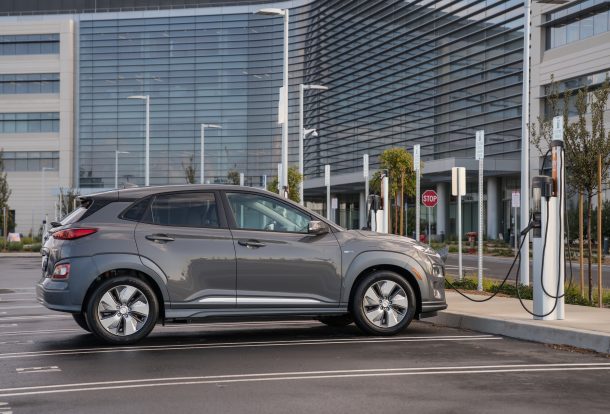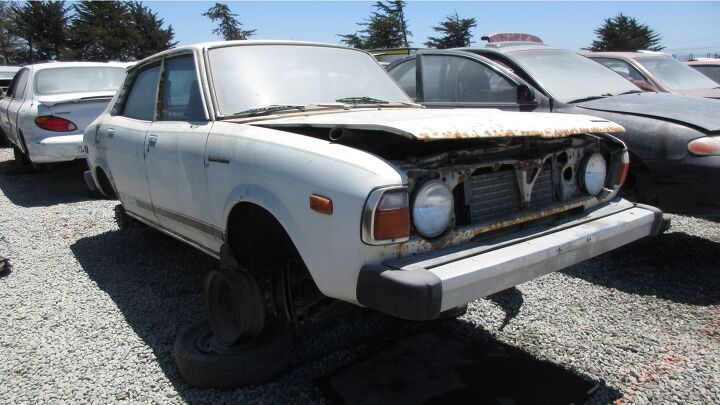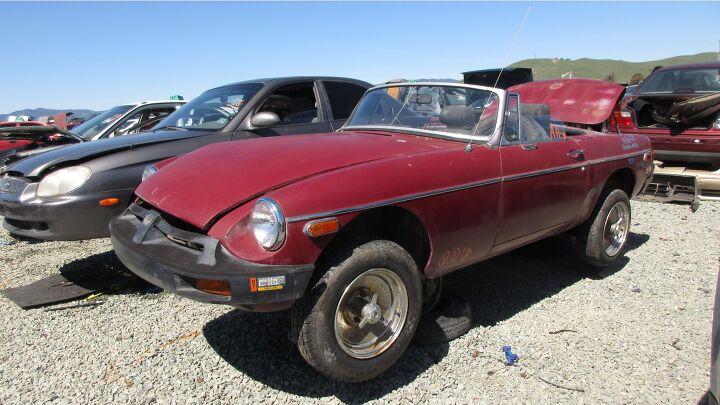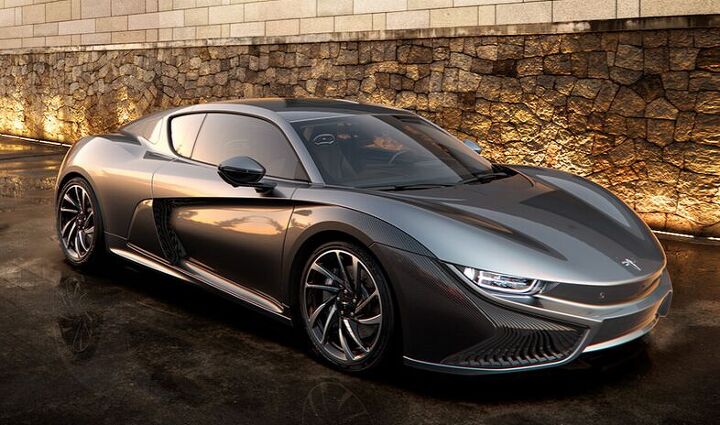#california
How Is Apple's Autonomous Vehicle Program Doing, You Ask?
Back in 2015, it was rumored that Apple was sinking significant resources and manpower into an electric vehicle program that also incorporated autonomous driving. But updates on “Project Titan” have been infrequent. Apple takes pains to keep its self-driving program under wraps.
There are, however, ways to track its progress. Since Apple tests its vehicles in California, it must submit an annual report to the state’s Department of Motor Vehicles outlining how many times human safety drivers retake control or interfere with the vehicle’s self-driving systems, as well as a tally of total miles driven.
Based on this metric alone, Waymo appears to be the industry leader, with “disengagements” occuring every 11,000 miles. General Motors’ Cruise came in second with roughly 5,200 miles between periods of human intervention. But what about Apple? Apparently, the firm is facing some rather strong headwinds. The company claims a human had to retake control every 1.1 miles.
California Gives Ford's Argo AI Green Light to Test AVs
Argo AI, the Pittsburgh-based firm Ford pumped $1 billion into and handed responsibility for educating its self-driving vehicles, just received a go-ahead for testing in the State of California. The company gained a testing permit from the California Department of Motor Vehicles on Tuesday, making its autonomous trials perfectly legal on public roads.
Ford’s current trajectory has its autonomous vehicles entering the commercial market by 2021. That’s two years after General Motors promised to do the same. However, recent events cast doubt over whether GM will be able to meet its self-imposed deadlines (some of which dictate future investments from its partners) and start mass production of computer-controlled cars by the end of this year. It’s not just GM that’s having trouble, either. A critical look into autonomous development shows many companies are struggling with advancing the technology to a point that would make it commercially viable.
The Blue Oval might be better positioned in the autonomous race than initially presumed.
2019 Hyundai Kona Electric Pricing Very Obviously Targets the Chevy Bolt
Hyundai’s Kona Electric is gradually seeping into select dealerships across the United States, requiring the company to (finally) make a definitive statement about its price. While our time spent with the model was brief, it left a positive initial impression. Clearly targeting the likes of Chevrolet’s Bolt and Tesla’s Model 3, the Kona EV did a fine job standing its ground and injecting a fun persona into alternative-energy vehicles.
While good, we held off on declaring it a modern masterpiece until we knew how much Hyundai planned to sell it for. Too expensive and people will tune out because, despite its unique charms, it’s technically still a subcompact crossover from a budget-friendly automaker — slick electric powertrain notwithstanding. Too cheap and the company is basically throwing money out the window, as the model is unlikely to be manufactured in high volumes and the brand can fall back on the federal government’s EV tax credits to absorb some of the cost.
California Is, Once Again, Considering Tesla Police Vehicles
Ever since Ford discontinued the Crown Victoria Police Interceptor, it’s become much harder to watch out for cops. Initially, you just had to keep tabs on any Dodge Charger in dark paint, but that quickly evolved into drivers becoming suspicious of every monochrome Explorer, Taurus, Durango, Tahoe, or Fusion Hybrid on the road as law enforcement began adopting the models for official use.
A police department in Fremont, California has added a Tesla that list, garnering tons of media attention in the process. However, after looking into the story, it seems Fremont is only testing a single, second-hand Tesla Model S 85D it purchased a year ago to see if the model is fit for service. Considering this is the same city where Tesla manufactures the vehicle, one would think the Fremont Police could have worked out some kind of deal with the factory. However, what interests us — and probably the department — most is figuring whether or not the 2014 Model S can actually hack it beneath the thin blue line.
Junkyard Find: 1978 Subaru DL Sedan
Living in Colorado, I see so many discarded Subarus during my junkyard explorations that it takes a very unusual one to make me reach for my camera. An SVX might do it (though not always), or maybe a BRAT (again, not always), or perhaps a Subaru with Saab badges. A really early Subaru, from the Malaise Era days when few Americans took the brand seriously — I think that’s always worth shooting.
Here’s a first-generation Leone that I had to go all the way to Northern California to find.
Colorado Mandates Electric Vehicle Sales, State Dealers Association Angry
The State of Colorado will be the next territory in the United States to join California in embracing electric vehicles. Democratic Governor Jared Polis has signed an executive order (his very first) proposing that the zero-emission vehicle rule be enacted no later than May of 2019. The rule would require automakers to sell more electric cars within the state each year until it reaches utopian status.
However, that could still be decades away. Thus far, Polis has only asked the state’s Department of Public Health and Environment to propose new rules to the Air Quality Control Commission over the coming months. As of now, there are no official rules stipulating how many EVs need to be sold every year. And California, which started is ZEV program years ago, estimates electric vehicles will account for between 8 and 9 percent of all new car sales within the state by 2025.
Junkyard Find: 1986 Toyota Tercel Wagon
Used-up examples of the 1983-1987 Toyota Tercel wagon (known as the Sprinter Carib in its homeland) still show up in junkyards today, but nearly all of them are the four-wheel-drive versions; the humble front-wheel-drive ones weren’t as desirable (once they became beaters, hoopties, and/or buckets) and mostly got crushed a decade ago.
Here’s an ’86 in a Silicon Valley self-service wrecking yard.
Junkyard Find: 1976 MG MGB
In all of my decades of visiting junkyards, one thing has remained constant: I’ll see a handful of Fiat 124 Sport Spider s and MG MGB s every year, about the same number in 2018 as I saw each year in 2001 or 1987. Here’s the latest: a red ’76 convertible in a self-service wrecking yard in California’s Central Valley.
China's Qiantu Motor to Manufacture EVs in North America With Domestic Partner
Every few weeks, it seems there’s another Chinese manufacture promising to wriggle into North America. This week it’s Qiantu Motor, which intends to build the K50 electric sports car with help from California-based EV firm Mullen Technologies. According to a preliminary agreement published on Mullen’s website, the American firm will homologate, assemble, and market the electric sports car in North America in 2020.
Simon Lei, Qiantu’s Head of Product Planning, previously expressed the brand’s intent to sell the model within the United States last April. Naturally, we’re always a little skeptical of these kinds of claims, given China’s track record on the matter and the ongoing trade war.
Another Tesla Driver Arrested for DUI While Using Autopilot
California Highway Patrol arrested a 45-year-old man early Friday morning under the suspicion of driving under the influence while his 2017 Tesla Model S was operating in Autopilot on Highway 101.
While condemned previously for its misleading marketing, Tesla has been clearer of late that Autopilot is not self-driving. Likewise, anyone who owns one of its vehicles should be able to understand that the feature has limitations necessitating regular human involvement to complete any journey.
However, none of this has stopped individuals from abusing the driving aid. In August another motorist was arrested on suspicion of driving under the influence of alcohol after his Tesla collided with a fire truck. Earlier in the year, a Tesla owner passed out while behind the wheel. Fortunately, Autopilot brought the vehicle to a stop in the middle of the Oakland Bay Bridge.
California Vows to Work Toward National Emissions Standard (While Voting to Keep Its Own)
California regulators voted on Friday to mandate an adherence to Obama-era federal vehicle emissions standards for cars sold in the state, regardless of Trump administration efforts to weaken the standards. It’s the latest salvo in a war between the Golden State and the current administration, which aims to strip California of its ability to self regulate its automotive emission rules and roll back the corporate average fuel economy for the entire country.
However, the Trump team doesn’t appear to be completely ignoring the environment. In a 500-page environmental impact statement from the NHTSA on the Safer Affordable Fuel-Efficient (SAFE) Vehicles Rule for Model Year 2021–2026, numerous inclusions acknowledge the existence of climate change. But the takeaway from the report is that the NHTSA doesn’t seem to feel that passenger vehicles will make much of a difference.
More Cash Could Be on the Way for California Electric Car Buyers
Just as one incentive prepares to fade away, another green vehicle bonus looms on the horizon. California is considering upping the amount of cash buyers of electric vehicles stand to gain from their state government at purchase time — boosting the subsidy from today’s $2,500 to $4,500.
The potential change comes after Tesla reached the 200,000 limit for the full federal EV tax credit in July, with General Motors and Nissan trailing not far behind.
It's Frustrating Times for Owners of Hydrogen-powered Cars
They’re the rarest breed on the road, drawing their car’s fuel source from the world’s most plentiful element — which just happens to be the hardest to get your hands on in any large quantity. Fuel cell vehicle drivers, of which none exist outside of California, depend on a small network of H2 refueling stations to stay on the road, and the drawbacks to using this rare power source are already well documented.
You’ll be renting a car if your road trip takes you too far from San Francisco or the SoCal area. Supply issues sometimes leaves that one nearby station out of service, as happened earlier this year. It’s almost as if a vehicle you plug into a wall is a better green idea, at least on the downstream side.
Regardless, these Honda Clarity FC, Toyota Mirai, and Hyundai Tucson FC owners made their bed and were prepared to lie in it. Unfortunately for them, the refueling network has once again revealed its fragility.
White House and California Still Discussing Emission Rules, Incredibly
Considering that the Trump administration’s Safer and Affordable Fuel Efficient (SAFE) Vehicles proposal specifically calls for the revocation of California’s power to set its own emissions rules, it’s miraculous that the Golden State is still willing to discuss the issue. But here we are.
Administration officials and members of the California Air Resources Board (CARB) emerged from a meeting on Wednesday, saying they were working toward resolving their differences over vehicle emissions, interested in establishing a single national standard, and — get this — would be happy to meet again.
Fueling the Opposition: EPA Staff Had Serious Reservations About CAFE Rollback Proposal
Staff at the Environmental Protection Agency had major disagreements over the decision to rollback corporate average fuel economy (CAFE) standards for the coming years, according to documents released last week. The matter echoes an event in May where science advisers for the EPA claimed the agency had ignored its own research in order to rationalize the push to relax fuel targets.
Both items have given ammunition to critics of the new proposal to claim the choice was politically motivated and based upon shoddy, biased research. Interesting, considering that’s exactly what the current administration said about the earlier decision to make them more stringent.
Led by the National Highway Traffic Safety Administration and backed by EPA, the current proposal seeks to keep fuel economy standards at 2020 levels — rather than continuing to elevate them. The arguments made for the move revolved around existing consumer preferences and saving lives. However, some of the agency’s staff seemed to be concerned with the NHTSA’s data and claimed it had overstepped by including the EPA in documents it didn’t approve of.






























Recent Comments